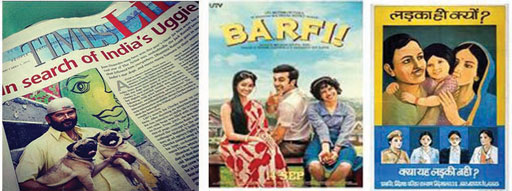3 Introducing environmental print into the classroom
What print resources can your students bring into the classroom? In Case Study 1, a new teacher takes steps to create a print-rich environment with her students.
Case Study 1: Ms Pillai develops the classroom environment
When Ms Pillai first became a primary school teacher, she was given Class I. Most of the students were first-generation students.
I felt I had full responsibility for the students’ literacy development. Fresh from teacher training, I knew that every teacher is entitled to Rs. 500 to purchase teaching and learning materials (TLM). I bought different coloured paper, marker pens, Post-it notes, glue, a few pairs of scissors, some charts and some National Book Trust story books, which are of good quality and also inexpensive.
Then I sought the help of my students, my most important resource, in the teaching and learning process. I asked them to get any print materials they could lay their hands on. I was amazed by what they brought into the classroom: film posters, advertisements, recycled magazines and newspapers, food packets, festival greeting cards, political leaflets, mobile phone instructions, computer and printer instructions, and health announcements.The print material that students brought also reflected their interests, things they wanted to know or read, and things they were curious about [such as the examples in Figure 4].

With these resources, we began to build the classroom’s print environment.
Students used scissors to cut letters and words from the print material they had brought in. While they built words and short sentences with my help in Hindi, I wrote out the English equivalents. We compared the same words in the two different languages, and in different scripts:
| house | ghar | घर |
| teeth | dant | दाँत |
| father | baap | बाप |
| mother | maa | मां |
This activity was also good for the development of students’ fine motor skills and eye-hand coordination. We also copied out letters and words in English and Hindi, and displayed these with drawings to illustrate the words. We made a word wall of our favourite and most interesting words.
All this was very encouraging for me as a new teacher. My students learned that words are symbols for people, places and things in their world. They increased their vocabulary and they developed confidence as bilingual students. I also gained more confidence in using English in the classroom.
2 Recognising environmental print
